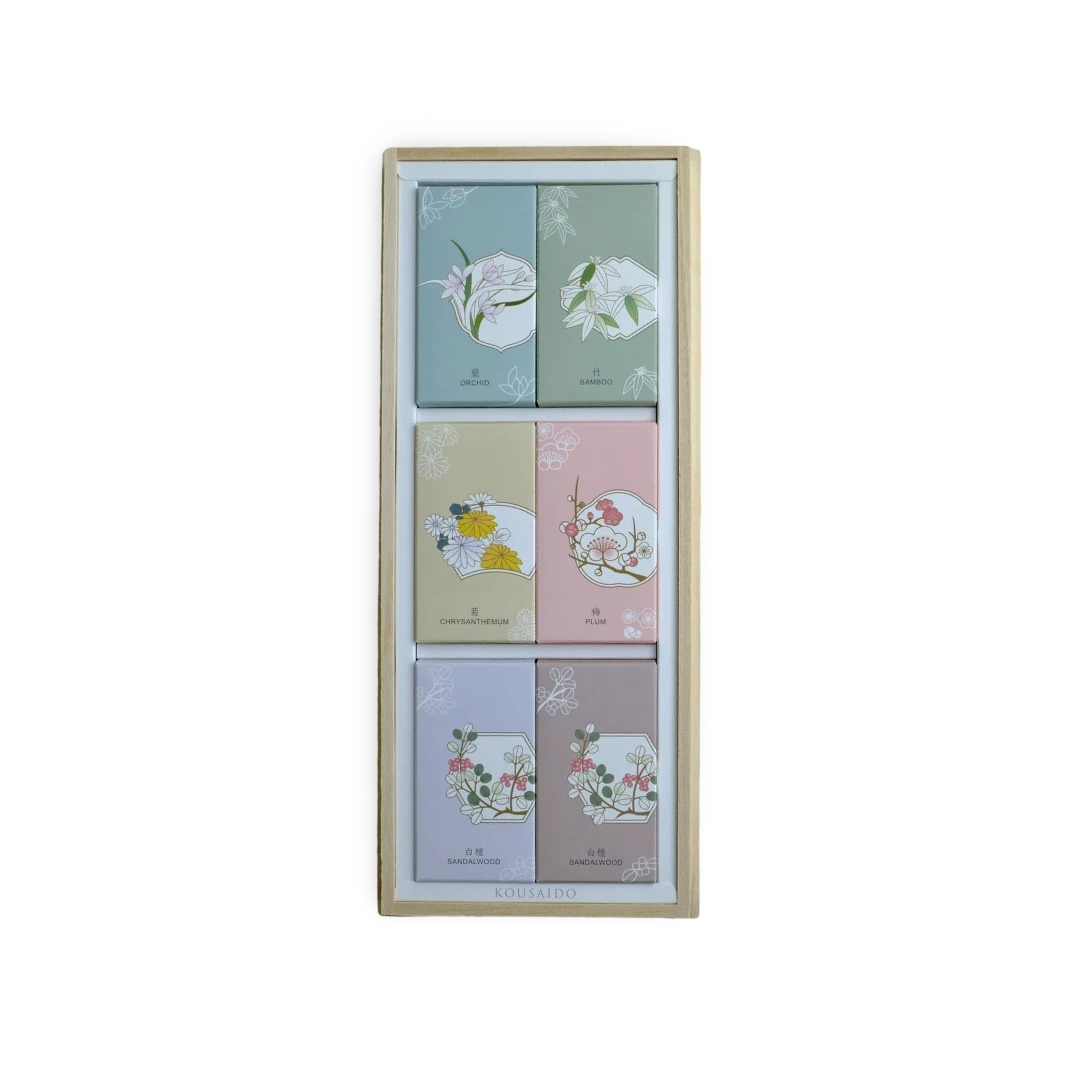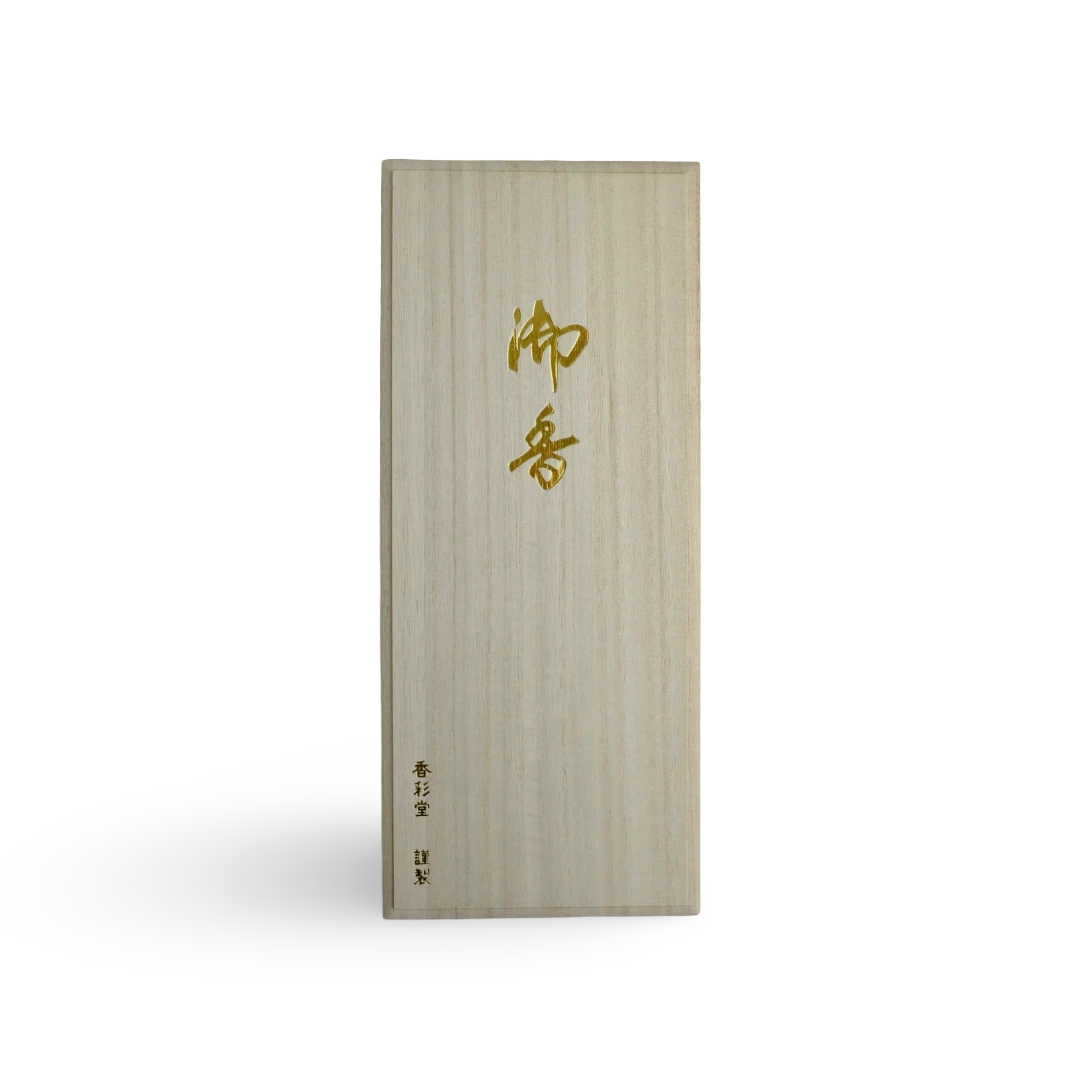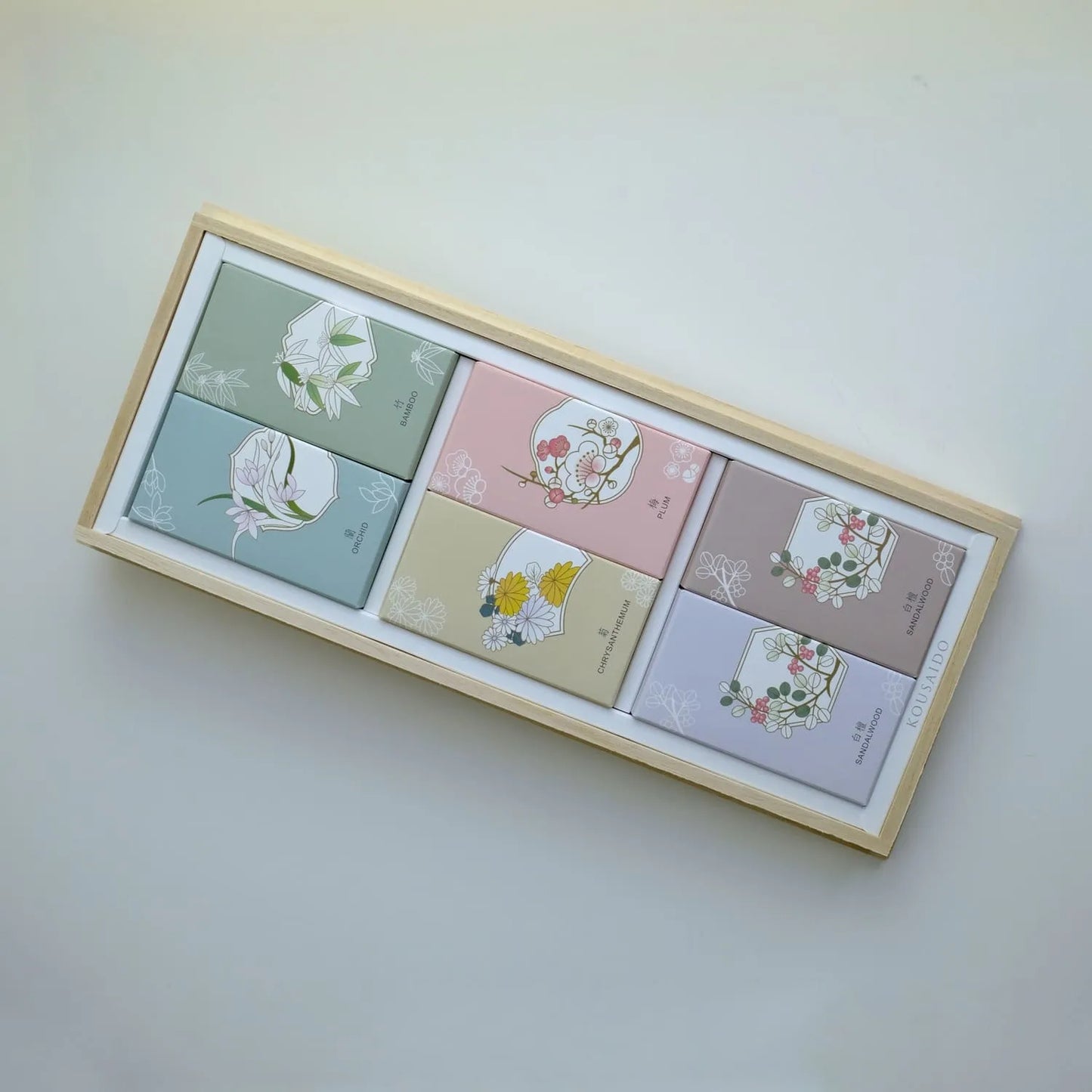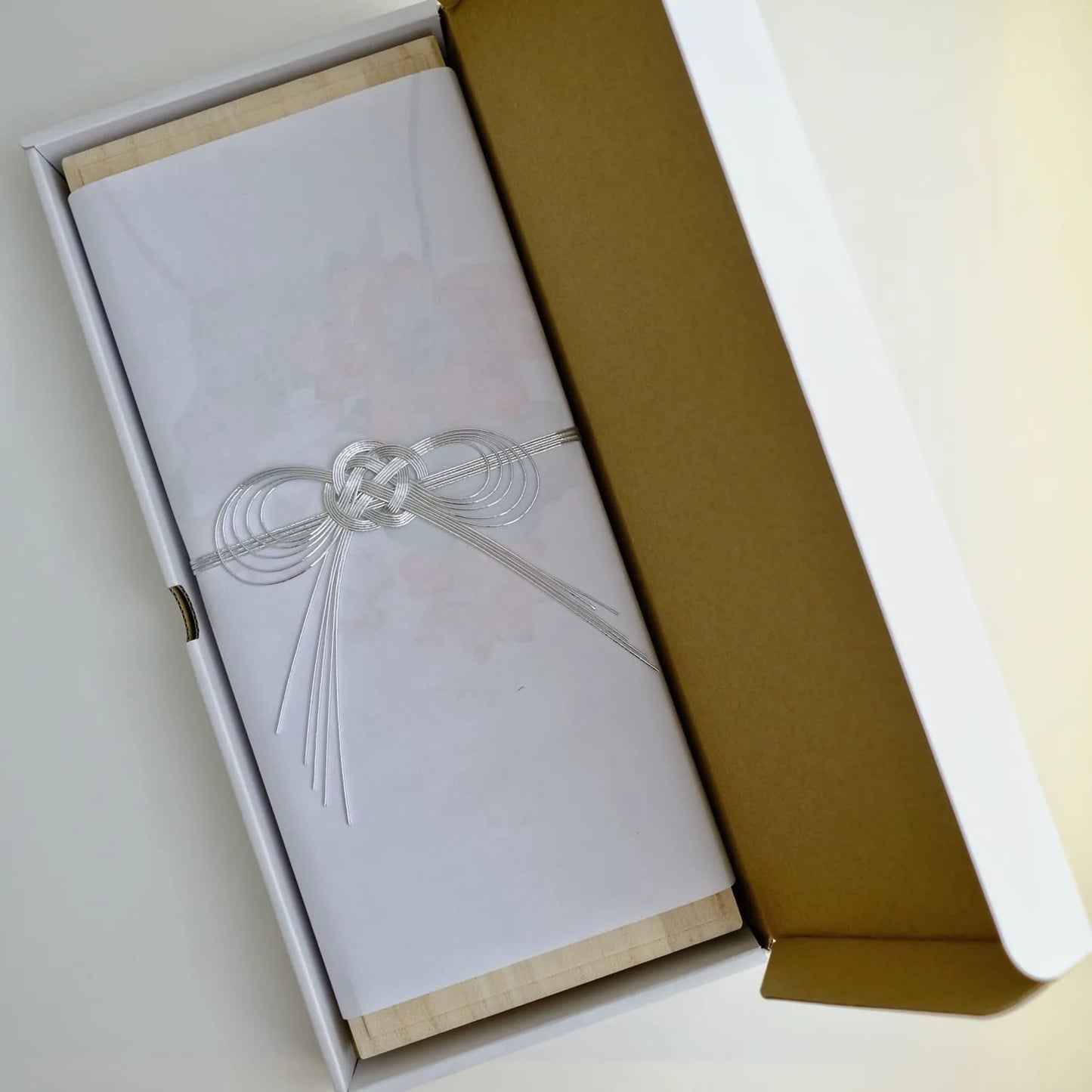Exploring the History and Meaning of the Four Gentlemen (四君子) in Asian Culture
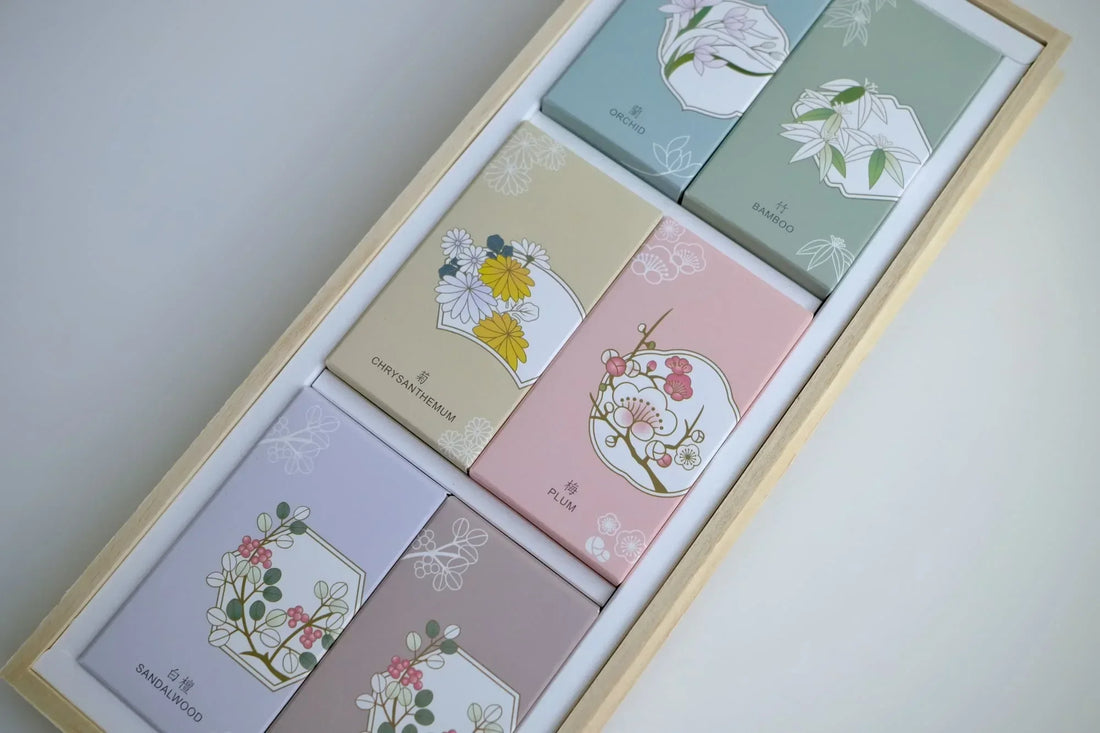
There are certain symbols so deeply woven into the fabric of a culture that they become a language of their own. In East Asian art and philosophy, few motifs are as eloquent or as enduring as the Four Gentlemen, or Sì Jūnzǐ (四君子). Represented by four humble plants—the plum blossom, the orchid, the bamboo, and the chrysanthemum—this quartet is more than just a subject for a beautiful painting or a fragrant incense. It is a profound expression of virtue, a meditation on the seasons of life, and a cultural touchstone that has connected artists, scholars, and admirers for over a thousand years.
But what exactly are the Four Gentlemen? Where did this elegant tradition come from, and how does it continue to inspire us today, from ancient scrolls to modern product design? Join us as we explore the rich history and timeless appeal of this remarkable artistic tradition.
What Are the Four Gentlemen? The Noble Plants of Virtue
The number four itself holds a special significance across many cultures, often representing foundational concepts. Think of the four classical elements—earth, water, air, and fire—that were once believed to make up the world, or the four seasons that govern the rhythm of life. In other traditions, it takes on more dramatic forms, like the Four Horsemen of the Apocalypse. While the power of this number is a fascinating topic, our focus today is on a far more gentle and virtuous quartet: the four noble plants of East Asia.
At its heart, the term "Four Gentlemen" refers to a collective grouping of four plants that symbolize the ideal virtues of a scholar in Confucian philosophy. The Chinese word for gentleman, Jūnzǐ (君子), describes a person of noble character and integrity. Each plant embodies a specific virtue, and their profound connection to the four seasons grounds these ideals in the natural rhythm of the year.
The Plum Blossom (梅, Méi), Champion of Winter: This is the most powerful of the seasonal pairings. The plum tree blooms in late winter when snow may still be on the ground. This act of flowering in the harshest cold makes it the ultimate symbol of fortitude, resilience, and hope. It represents a noble spirit that remains unbroken in the face of adversity, promising that spring is on its way.
众芳摇落独暄妍,占尽风情向小园。
疏影横斜水清浅,暗香浮动月黄昏。All other flowers have fallen; alone you glow in beauty,
claiming every loveliness for this small garden.
Sparse shadows slant across the clear, shallow water;
a hidden fragrance drifts through the moon-lit dusk.— from "A Small Plum Tree in My Mountain Garden" (山园小梅) by Lin Bu (林逋)

DARABARA Note: And if you came across the popular "xue hua piao piao" meme back in ~2020, that song "Yi Jian Mei" (一剪梅) by Fei Yu-ching is, also, about the resilient spirit of the plum blossom.
The Orchid (蘭, Lán), Sage of Spring: The wild orchid blooms in early spring, often hidden in temperate valleys. Its subtle, sweet fragrance perfectly captures the season of quiet renewal and gentle growth. The orchid, therefore, represents humility, refined elegance, and spiritual purity. Like the arrival of spring, its beauty is understated, symbolizing a virtuous character that does not seek recognition.
孤兰生幽园,众草共芜没。
虽照阳春晖,复悲高秋月。A lonely orchid grows in a secluded garden,
choked by rank weeds all around.
Though it drinks the springtime sun,
still it grieves when the high autumn moon is cold.— from "Old Airs: A Lonely Orchid" (古风·孤兰生幽园) by Li Bai (李白)
The Bamboo (竹, Zhú), Pillar of Summer: Bamboo is most vigorous during the hot and rainy months of summer, its lush growth embodying the season's vitality. A bamboo grove also offers a cool refuge from the intense heat. This duality makes it a symbol of integrity, strength, and flexibility. It grows upright and strong through the "heat" of life's challenges, yet it bends in summer storms without breaking, representing the ability to adapt without compromising one's core principles.
绿竹半含箨,新梢才出墙。
色侵书帙晚,阴过酒樽凉。Emerald bamboos half-wrapped in sheaths,
their new shoots have just pushed beyond the wall.
Their color deepens the evening pages of my book;
their shade passes over the wine-cup and cools it.— from "Composing on Bamboo at the Residence of His Excellency Yan Zheng" (严郑公宅同咏竹) by Du Fu (杜甫)
The Chrysanthemum (菊, Jú), Ascetic of Autumn: Braving the first frosts, the chrysanthemum blooms deep into the autumn when most other flowers have withered. This late bloom connects it to longevity, perseverance, and graceful nobility. Famously cultivated by the poet Tao Yuanming (陶渊明, Táo Yuānmíng) after he retired from public office, it represents the virtue of a scholar who remains steadfast and tranquil in the "autumn" of life, choosing integrity over the pursuit of fleeting power.
采菊东篱下,悠然见南山。
Plucking chrysanthemums beneath the eastern fence,
at ease I catch sight of the southern mountain.— from "Drinking Wine (Poem V)" (饮酒·其五) by Tao Yuanming (陶渊明)
Together, this quartet provides a complete moral compass. This progression—from winter's endurance to spring's humility, summer's vitality, and autumn's graceful contentment—creates a profound metaphor for the entire arc of a virtuous life.
Roots in a Dynasty: The Origin and Rise of a Beloved Motif
While the appreciation for these individual plants is ancient, their grouping as the "Four Gentlemen" is a tradition that crystallized over centuries, reaching its peak during a time of great cultural and political upheaval.
The conceptual seeds were sown in the Song Dynasty, a period of immense cultural and artistic refinement. Scholars and artists of this era, such as the legendary poet and painter Su Shi (苏轼, Sū Shì), began to imbue plants, particularly bamboo, with profound Confucian and Daoist symbolism. They saw in bamboo’s form a reflection of the ideal human character.
However, the Four Gentlemen as a distinct artistic genre truly gained prominence during the Yuan Dynasty. This was a period when China was under the rule of the Mongol Empire. Many Confucian scholar-officials, known as the literati, found it dishonorable to serve a foreign court. They chose to resign from their government posts and retreat into a life of seclusion and artistic expression. In this self-imposed exile, the Four Gentlemen became their perfect subject. Painting the resilient plum, the humble orchid, the unbending bamboo, and the noble chrysanthemum was not merely a decorative act; it was a quiet political statement and a personal affirmation of their own unbroken spirit and unwavering integrity.
The genre was further solidified and popularized during the Ming Dynasty. It was during this era that the techniques for painting the Four Gentlemen became a foundational skill for any aspiring artist. The process of learning to paint them—mastering the calligraphic brushstrokes for each leaf, petal, and stalk—was considered a form of moral and spiritual training.
This widespread adoption was significantly aided by the publication of artistic manuals. The most famous of these is the Mustard Seed Garden Manual of Painting (芥子園畫傳, Jièzǐyuán Huàzhuàn), first published in the early Qing Dynasty (1679). This encyclopedic work provided detailed, step-by-step instructions on how to paint various subjects, with extensive sections dedicated to the Four Gentlemen (each plant gets an entire volume). It became one of the single most influential textbooks for artists across East Asia, codifying the techniques and ensuring the tradition would be passed down for generations.

Click to view the interactive version from the Chinese Waterprint Database
Beyond the Scroll: Modern Interpretations and Adaptations
Today, the spirit of the Four Gentlemen continues to thrive, adapted into forms far beyond traditional ink-wash painting. The symbolism is so powerful and aesthetically pleasing that it has found a home in nearly every aspect of modern life in Asia.
Beyond their collective identity as the Four Gentlemen, each plant holds a cherished place in the cultural lexicon individually. Their symbolism has been reinforced over centuries through thousands of poems, essays, and works of literature that sing praises to their unique virtues. This deep-seated admiration is so profound that it is woven into the very identity of the people. In a deeply personal and aspirational act, millions of individuals across East Asia are given names containing the characters for plum (梅, Méi or Ume), orchid (蘭, Lán), bamboo (竹, Zhú or Take), or chrysanthemum (菊, Jú or Kiku). This enduring tradition reflects a parent’s heartfelt wish for their child to grow up embodying the noble qualities these plants represent: resilience, elegance, integrity, and grace.
- In Contemporary Art: Artists continue to explore the theme, but often with a modern twist. They might use new media like digital art, sculpture, or large-scale installations to deconstruct and reinterpret the traditional virtues. Some use the motif to comment on environmental issues or the challenges of maintaining integrity in a fast-paced, modern world.
- In Fashion and Design: The elegant forms of the Four Gentlemen are a staple in textile design, appearing on everything from high-fashion couture to everyday fabrics. Their minimalist aesthetic lends itself perfectly to modern branding, where companies use the image of a bamboo stalk or a plum blossom to convey ideas of strength, purity, and natural quality.
- In Lifestyle and Products: The most personal adoption of the Four Gentlemen is in products designed to bring a sense of tranquility and refinement into the home. Premium incense sets, like the one that inspired this article, are a perfect example. Each scent is crafted to evoke the specific feeling and virtue of its corresponding plant, transforming a daily ritual into a moment of mindful reflection on grace and perseverance.
A Shared Heritage: The Four Gentlemen Across Asia
The influence of the Four Gentlemen was never confined to China’s borders. As a central theme in East Asian art, it spread through cultural exchange, becoming a shared heritage in Japan, Korea, and Vietnam, where it was embraced and adapted with unique local flavors.
- In Japan (Shikunshi): The concept of the Four Gentlemen, known as Shikunshi, was introduced to Japan along with Zen Buddhism and ink-wash painting techniques. It resonated deeply with the Japanese aesthetic of wabi-sabi—the appreciation of transient, imperfect beauty. The Shikunshi became a popular subject for painting on folding screens (byōbu) and sliding doors (fusuma), as well as a common motif in textiles, lacquerware, and ceramics.
- In Korea (Sagunja): In Korea, the Four Gentlemen are known as Sagunja (사군자) and became a cornerstone of art during the Joseon Dynasty. For the Korean scholar-artists, or Seonbi, mastering Sagunja painting was considered essential training, reflecting their own deep commitment to Confucian virtues. The motif remains one of the most beloved subjects in Korean traditional painting and calligraphy.
- In Vietnam (Tứ Quân Tử): In Vietnam, the group is known as Tứ Quân Tử and was seamlessly integrated into Vietnamese decorative arts. It is frequently seen in the intricate woodwork of temples and traditional houses, as well as in mother-of-pearl inlay furniture and ceramics, symbolizing the same noble virtues of integrity and refinement.
Perhaps the most personal way to connect with this tradition is by bringing its fragrances into your own space. The virtues of the Four Gentlemen—resilience, elegance, integrity, and grace—can be experienced not just visually, but through the evocative power of scent. We have curated Kousaido's Shikunshi 'Four Gentlemen' Incense Gift Set to honor this legacy. Each low-smoke incense is crafted to capture the unique essence of the plum, orchid, bamboo, chrysanthemum, and the foundational aroma of sandalwood. It is an invitation to transform your daily rituals into moments of mindful reflection. We invite you to explore the collection and discover which gentleman's spirit resonates most with you.

Click to explore the Kousaido 'Four Gentlemen' Incense Gift Set
The Enduring Grace
From a quiet statement of political resistance in 13th-century China to a well-recognized symbol of elegance across Asia today, the Four Gentlemen have proven to be a remarkably resilient and adaptable motif. They remind us that true strength is often quiet, that beauty can be found in humility, and that integrity is a virtue that withstands the harshest of seasons.
Whether you experience them through an ancient scroll, a modern design, or the subtle fragrance of incense, the Four Gentlemen offer a timeless invitation: to live with grace, to stand firm in one’s principles, and to find beauty in every season of life.


